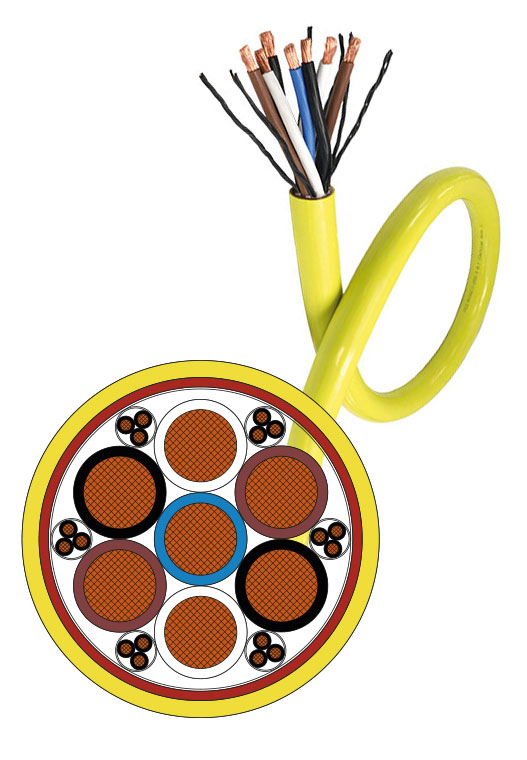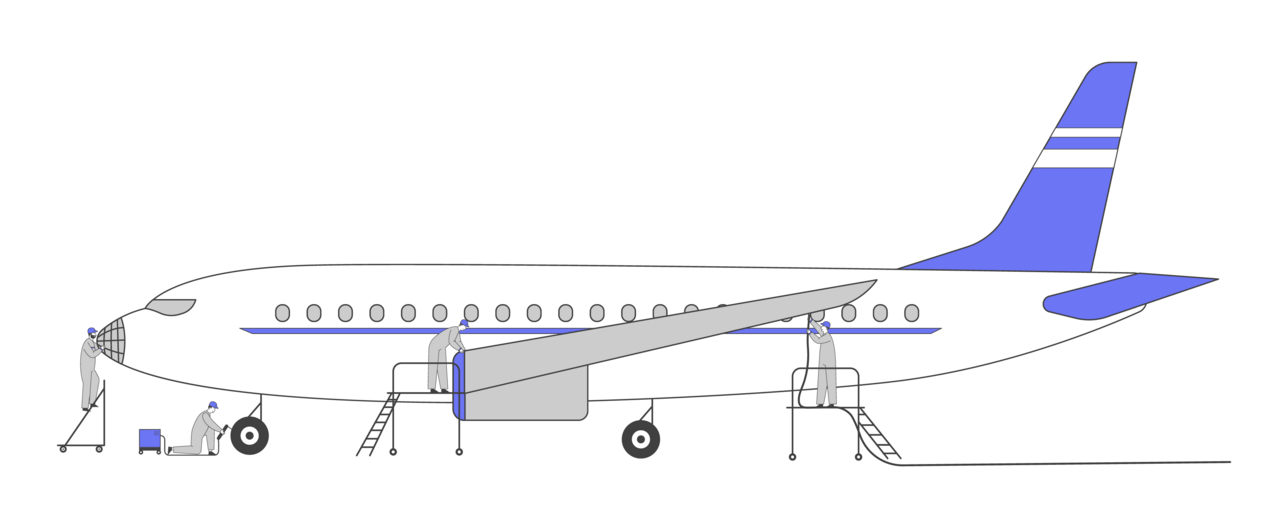In industry, the frequency of alternating current networks is usually 50 Hz (e.g. in Europe and Asia) or 60 Hz (e.g. in North America). In civil and military aviation, however, a frequency of 400Hz is used in aircraft electrical systems. The reason for this is that transformers and motors that are operated at 400Hz can be built much smaller and lighter than those with a mains frequency of 50 or 60 Hz.
But why is that so?
An engineer would explain it as follows: The electromotive force (EMF) generated in a coil is proportional to the magnetic flux and frequency. Higher frequencies require a lower magnetic flux, so less iron is needed in the core of the transformer. The number of primary and secondary windings, i.e. the amount of wire wound around the core, can also be reduced at higher frequencies. This reduces both the size and the weight.
However, a high frequency such as 400Hz has the disadvantage that electrical current cannot be transported efficiently over longer distances. As electricity supply companies are dependent on low-loss transmission, there is an international consensus on lower grid frequencies of 50 Hz or 60 Hz, which offer a good compromise between the requirements for motors and transformers and transmission efficiency.
400Hz in Aviation – Compact, Efficient, Powerful
Some railway networks, including that of Deutsche Bahn, still operate at 16.7 Hz. This comparatively low frequency is the result of the technological possibilities of the first electrical machines at the beginning of the 20th century, which made it possible to build powerful machines with low losses at low frequencies. Although this is no longer technically necessary today, the switch to higher frequencies was not made for economic reasons.
The use of 400Hz networks is therefore limited to applications with shorter distances, such as in aeroplanes. In addition, the power of 400Hz applications is usually in the range of a few hundred kilowatts. The main advantage of 400Hz is the more compact design and lower weight of the electrical equipment, which is particularly important in aviation to minimise weight and maximise range per unit of fuel.
In accordance with international standards (DFS 400 and ISO 6858), the electrical power supply for aircraft is currently fed from the low-voltage network (400 V / 230 V, 50 Hz) and converted to 200 V / 115 V at 400Hz for the on-board network. 400Hz converters with an output of up to 90 kVA are available as standard.
Do you have any questions about our products? Your direct line to our experts! Contact



